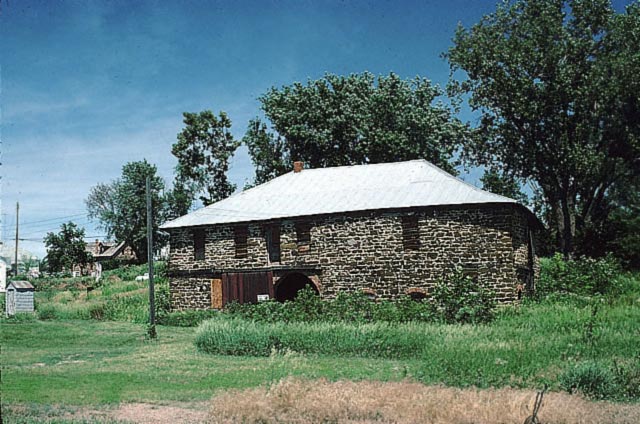Mail service was a matter of vital importance to frontier Nebraskans, especially to those who depended on the mails for their livelihood. Mark J. Kelley, editor of the Little Blue at Jenkins Mill in Jefferson County, editorialized repeatedly during his paper’s brief life (1869-71) on the need for better, faster mail service. His newspaper was the first one to be published in Jefferson County and was Republican in politics. It was discontinued in 1871.
From the Little Blue, November 6, 1869: “We would like to know if there cannot be some arrangement made by which we could get our mails regular. . . . We have had no mail from Brownville for three weeks, until Thursday, when it all came together. This is gratifying to merchants, lawyers and editors, who have to rely on the mails to keep them posted, and through which they transact a large amount of their business.
“Our mail from the east comes up on something that was, no doubt, once a colt, and may have been at one time a horse, but now is nothing but a huge pile of bones, that, with the assistance of spurs, a rawhide, and a good deal of extra swearing by the carrier, is persuaded to travel about ten miles a day, provided it don’t fall down or stop to rest.”
Kelley ended by urging the Brownville press to “take this matter in hand and not let it rest until we have at least a triweekly route from that city to this place.” Complaints that some subscribers to the Little Bluewere not receiving their papers, prompted Kelley to write December 4 on another aspect of poor mail service: careless postmasters.
Some postmasters, according to Kelley, “keep all their mail in a dry goods box, throwing it in promiscuously, and when any one calls for mail it has all to be over hauled, and not a letter or paper found; while at the same time there are perhaps half a dozen papers and letters in the aforesaid dry goods box for the party calling. The P.M. has them in such shape that he cannot find them by simply glancing at the box, consequently the papers lay in the office and the editor is abused because his subscribers do not get their papers. We hope that when our subscribers go to their post office they will make the P.M. look at every paper in his dry goods box before they permit him to turn them off with ‘no mail.'”
When the St. Joseph and Western Railway was built through Jefferson County, the new town of Steele City, named for railroad president Dudley M. Steele, was platted in 1873. The businesses at Jenkins Mill, including a general store, hardware store, hotel, and post office, were moved to the new location. The only exception was the mill building, established in 1867 to harness the fall of the Little Blue River to grind flour and corn for the surrounding settlers.
The downtown area of Steele City has been designated as a national historic district. Notable buildings there include the Baptist Church, a limestone building erected in 1882; the Zoellin House, an elaborate two-story frame dwelling, built around 1890; and the 1900 sandstone blacksmith shop. 
The Steele City Historic District includes this stone livery barn and other structures dating from the late nineteenth and early twentieth centuries.
NSHS Historic Preservation JF12



